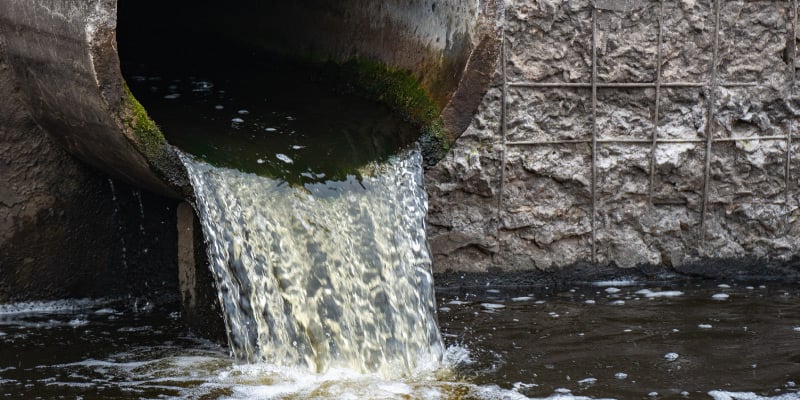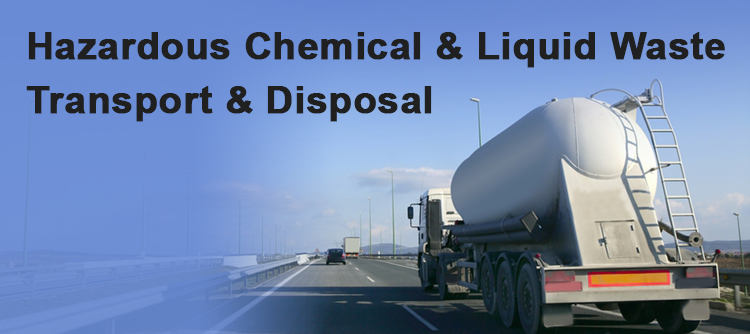Innovative Industrial Wastewater Treatment Solutions: Shielding the Atmosphere
Innovative Industrial Wastewater Treatment Solutions: Shielding the Atmosphere
Blog Article
How Liquid Garbage Disposal Works: A Thorough Overview of Methods and Technologies Utilized

Summary of Liquid Waste Types
The intricacy of fluid waste kinds necessitates an extensive understanding of their qualities and ramifications for disposal. Liquid waste can extensively be classified right into several kinds, consisting of industrial, local, farming, and contaminated materials. Each classification shows distinct residential or commercial properties, calling for specific administration approaches to mitigate environmental and wellness risks.
Industrial liquid waste stems from making processes and commonly includes a series of contaminants, such as hefty metals, solvents, and natural substances. Community liquid waste, mainly comprising wastewater from houses and business facilities, has raw material, nutrients, and microorganisms (industrial wastewater treatment). Agricultural liquid waste, consisting of overflow from farms, might consist of fertilizers, chemicals, and pet waste, posing threats to water quality and communities
Dangerous fluid waste is characterized by its poisoning, reactivity, or possible to cause injury. This category includes substances like acids, bases, and particular chemicals that demand rigorous handling and disposal procedures. Understanding these varied liquid waste kinds is crucial for creating efficient disposal techniques and making certain compliance with environmental policies. Proper classification and characterization are vital for applying suitable treatment techniques and minimizing the damaging effect on public wellness and the atmosphere.
Physical Therapy Methods

Screening is the first action, where larger fragments and particles are eliminated from the liquid waste making use of screens or grates. This procedure safeguards downstream devices from damages and guarantees smoother operation. Following screening, sedimentation makes use of gravitational force to separate solids from liquids. In sedimentation tanks, much heavier bits settle near the bottom, developing a sludge layer, while the clarified liquid can be more dealt with.
Filtration is one more vital method that involves passing the liquid with porous materials, such as sand or membranes, to capture smaller sized bits. This action improves the top quality of the fluid, making it ideal for subsequent treatment processes.

Chemical Therapy Methods
Chemical treatment strategies are essential for effectively handling liquid waste, especially in attending to dissolved and colloidal contaminants that physical methods may not appropriately eliminate. These strategies make use of different chemical representatives to reduce the effects of, speed up, or transform dangerous substances right into much less harmful types.
One usual technique is coagulation and flocculation, where chemicals such as alum or ferric chloride are included in promote the aggregation of put on hold bits. This process enhances sedimentation, enabling much easier removal of the resulting sludge. Furthermore, oxidation processes, using agents like chlorine or ozone, are utilized to damage down complicated organic substances and pathogens, providing the waste more secure for discharge or additional therapy.
Neutralization is one more vital technique, which changes the pH of acidic or alkaline waste streams to neutral levels, protecting against potential harm to downstream systems and the atmosphere. Furthermore, over here progressed oxidation processes (AOPs) utilize combinations of oxidants and ultraviolet light to degrade persistent contaminants, accomplishing a higher level of treatment efficiency.
Biological Therapy Processes
Biological therapy processes play a critical duty in the administration of fluid waste by utilizing microbes to decay raw material and decrease contaminant levels. These processes can be extensively classified right into cardio and anaerobic therapies, each utilizing details microbial areas to accomplish effective waste deterioration.
Aerobic therapy involves using oxygen to help with the malfunction of organic products by germs. This procedure is typically applied in turned on sludge systems, where aeration storage tanks offer a favorable atmosphere for microbial development, leading to the oxidation of organic toxins. The resultant biomass can be separated from dealt with effluent through sedimentation.
On the other hand, anaerobic therapy takes place in the absence of oxygen, counting on different bacteria to damage down organic issue. This technique is specifically advantageous for high-strength waste, as it generates biogas, a sustainable energy source, while reducing sludge manufacturing. Technologies such as anaerobic digesters are regularly used in industrial and municipal applications.
Both anaerobic and aerobic biological treatments not just minimize the environmental impact of fluid waste however likewise assist in resource healing, making them essential parts of lasting waste monitoring techniques. Their versatility, effectiveness, and performance sustain their extensive implementation throughout different industries.
Arising Technologies in Disposal
Ingenious techniques to fluid waste disposal are swiftly progressing, driven by improvements in innovation and a raising emphasis on sustainability. Among these arising technologies, membrane layer bioreactors (MBRs) have actually gained grip for their ability to combine biological treatment with membrane layer filtration, resulting in high-quality effluent that can be reused in various applications. MBRs allow smaller impacts and much more efficient procedures contrasted to conventional systems.
Another promising advancement is making use of anaerobic digestion incorporated with nutrient recovery modern technologies, which not only treats fluid waste however likewise creates biogas and recoups important nutrients like nitrogen and click over here now phosphorus. This double benefit improves resource efficiency and decreases ecological effect.
In addition, progressed oxidation processes (AOPs) are being adopted for the destruction of intricate natural toxins. These techniques make use of effective oxidants and stimulants to break down pollutants at the molecular degree, offering an extremely efficient remedy for tough waste streams.
Additionally, the combination of synthetic knowledge and equipment learning in waste monitoring systems is enhancing operational effectiveness and anticipating upkeep, leading to lowered costs and improved environmental compliance. These technologies reflect a significant shift towards even more go to my site effective and sustainable fluid waste disposal practices.
Final Thought
In conclusion, effective liquid waste disposal necessitates a comprehensive understanding of various techniques and innovations. By continually advancing these techniques, it ends up being possible to deal with the expanding difficulties associated with liquid waste, eventually adding to environmental security and resource healing.
Liquid waste disposal is an important aspect of environmental administration, requiring a comprehensive understanding of various methods and innovations tailored to various waste kinds. Fluid waste can extensively be categorized into several kinds, consisting of industrial, municipal, agricultural, and dangerous waste. Agricultural fluid waste, including overflow from ranches, might consist of fertilizers, chemicals, and pet waste, presenting risks to water top quality and communities.
Various physical therapy approaches play an important function in taking care of liquid waste efficiently - industrial wastewater treatment.In verdict, effective fluid waste disposal demands a comprehensive understanding of numerous methods and innovations
Report this page